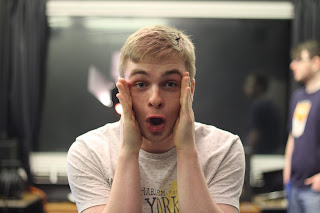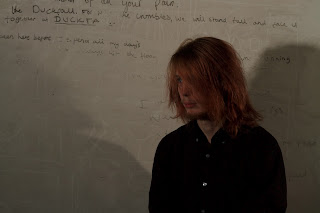Friday, 11 December 2015
Tuesday, 1 December 2015
Narrative Ideas + Final Idea
When coming up with our first plot line we wanted to play around with a mostly minimalistic approach to props and actors as we believe it can produce a more powerful image and it works within the budget we had to work with. One of our original ideas was to show a piece of jewellery travel throughout the ages, showing a possible sentimental value to the item, however this would prove difficult to make sets look convincing and we would possibly have to think of fifteen different ime eras to place in in. We could however have showed it throughout someone's like from birth to death but then we would have use three/four different actors of various ages.
An idea we kept coming to again and again resolved around cards and card games and how we could play around with that. We especially like the idea of giving certain cards significance so that they give meaning to the characters action or add to the narrative in a way. We went straight away to an idea of a serial killer who chooses his targets based on what he draws. Although this idea seemed an interesting concept, it wasn't very original and we struggled heavily to figure out the images we would take as we could literally go anywhere if we could think of a card that fit.
Our final idea was to play around with the idea of isolation and spending Christmas away from family and friends. This worked more in our favour as Swansea (at the time) was filled with various Christmas themed decorations meaning we were not too limited with sets especially Winter Wonderland which would provide a nice contrast to the dark nature of the story. To show the passage of time within the plot with an advent calender which shows the protagonist is trying to enjoy the holiday, but just can't. One thing we really wanted to do with his project was play around space and colour and how that could show the isolation and loneliness (e.g. having him dressed in mostly black clothing and having a mostly blank facial expression).
An idea we kept coming to again and again resolved around cards and card games and how we could play around with that. We especially like the idea of giving certain cards significance so that they give meaning to the characters action or add to the narrative in a way. We went straight away to an idea of a serial killer who chooses his targets based on what he draws. Although this idea seemed an interesting concept, it wasn't very original and we struggled heavily to figure out the images we would take as we could literally go anywhere if we could think of a card that fit.
Our final idea was to play around with the idea of isolation and spending Christmas away from family and friends. This worked more in our favour as Swansea (at the time) was filled with various Christmas themed decorations meaning we were not too limited with sets especially Winter Wonderland which would provide a nice contrast to the dark nature of the story. To show the passage of time within the plot with an advent calender which shows the protagonist is trying to enjoy the holiday, but just can't. One thing we really wanted to do with his project was play around space and colour and how that could show the isolation and loneliness (e.g. having him dressed in mostly black clothing and having a mostly blank facial expression).
Narrative Theory
Kuleshov Effect (Montage Theory):
http://www.readwritethink.org/files/resources/lesson_images/lesson904/MidPlotStructure.pdf
http://www.ohio.edu/people/hartleyg/ref/fiction/freytag.html
https://web.cn.edu/kwheeler/freytag.html
This theory mention how the order in which images are placed before and after each over and how that can have effect on the viewer. Kuleshov, a Russian film maker and theorist wanted to invent a new style of editing unlike the West's continuity style. He believed in the power of the imagery and wanted it test by holding an experiment in which he showed three different audiences a short clip of a neutral looking man and then followed it by a separate clip, a different one for each crowd. After the experiment they were asked what they thought the man was feeling at the time. The first who were shown a bowl of soup thought he was hungry, the second were shown a coffin and thought he was mourning and the final were shown a beautiful women in which thye thought he was lusting for her. This shows the important of image as it can completely change the audience's interpretation of a project, film or photography.
This is crucial for the upcoming fifteen image project as we are telling a darker story so we have to make sure what we photograph fits in with the rest of the images and does not divert the audience. Also this allows us to play around with what imagery we show as instead of showing a fully made set, we can show various objects with the same emotional intention.
Since changing our idea to fit a Christmas away from home theme, this theory benefits us more as to show our characters emotional state through locations such as going from bright winter themed amusement park to a dark and empty room, showing him wanting to distance himself from the holiday.
Freytag's Pyramid:
Freytag's pyramid is a visual representation of patterns n narrative structure based on a variety works of literature he read at the time, and can be extended to today. A basic version is made of five different sections starting with:
- Exposition: the beginning of the narrative),
- Rising Action,
- Climax: the most intense/story affecting moment),
- Falling Action: the aftermath of the climax and the signal for the end),
- and Conclusion: where the main problem is solved and is the end of the narrative).
However son more complex version also include additional sections
- Inciting Incident: The event that leads to Rising Action)
- Reversal: After the climax where things begin to go further wrong for the protagonist)
- Denouncement: Any unexplained secrets are told or explained by either the main character or author and is the end of the narrative.
http://www.readwritethink.org/files/resources/lesson_images/lesson904/MidPlotStructure.pdf
http://www.ohio.edu/people/hartleyg/ref/fiction/freytag.html
https://web.cn.edu/kwheeler/freytag.html
Monday, 2 November 2015
Film Stills
\Favourite: Ex_Machina
In this scene the main character is questioning his own humanity after coming face to face with artificial intelligence that both acts and behaves like humans. The reason I like this still so much is the bizarre nature of how he acts and the way he is a;most pulling apart his own face to see what is truly is (it really reflects how the character is feeling in the situation). The light blue lights shined on the character add this 'cyber' feeling to the scene, these add to the conflicting opinions of the protagonist.
Least Favourite: Lucy
The following is from one of the final scene of Lucy where she is travelling through time and space. Their are multiple reasons I do not like this particular still and they stem from the lighting and quality. For one the lighting is a not softer on the city than it is Lucy, also the same can be said with the title character herself when it comes to the quality both images have been shot. The fact that she seems to be shot in a much higher quality than the background making it seem like an obvious use and green screen that breaks audience immersion.
I feel I can use these stills in order to make my work look more cinematic and they show the importance of correct lighting and constant quality ensureance both in taking the photos and in post production.
Sunday, 1 November 2015
Subscribe to:
Comments (Atom)


















































